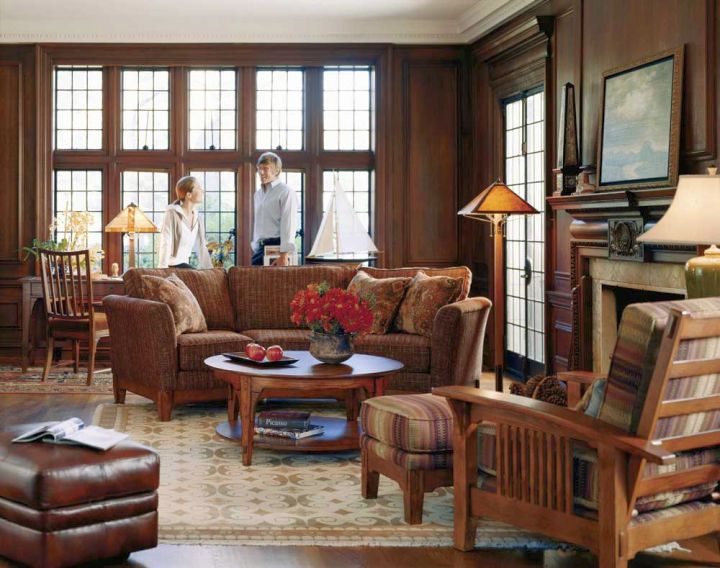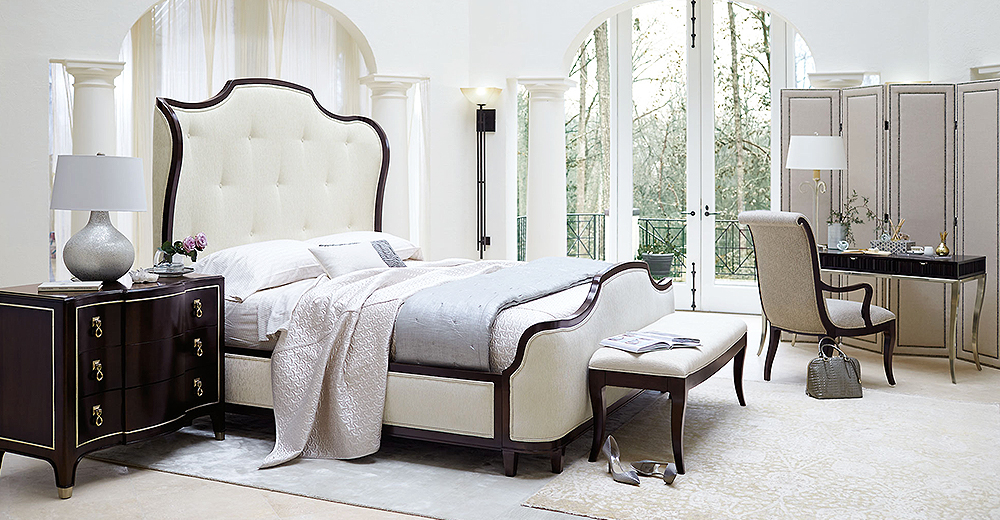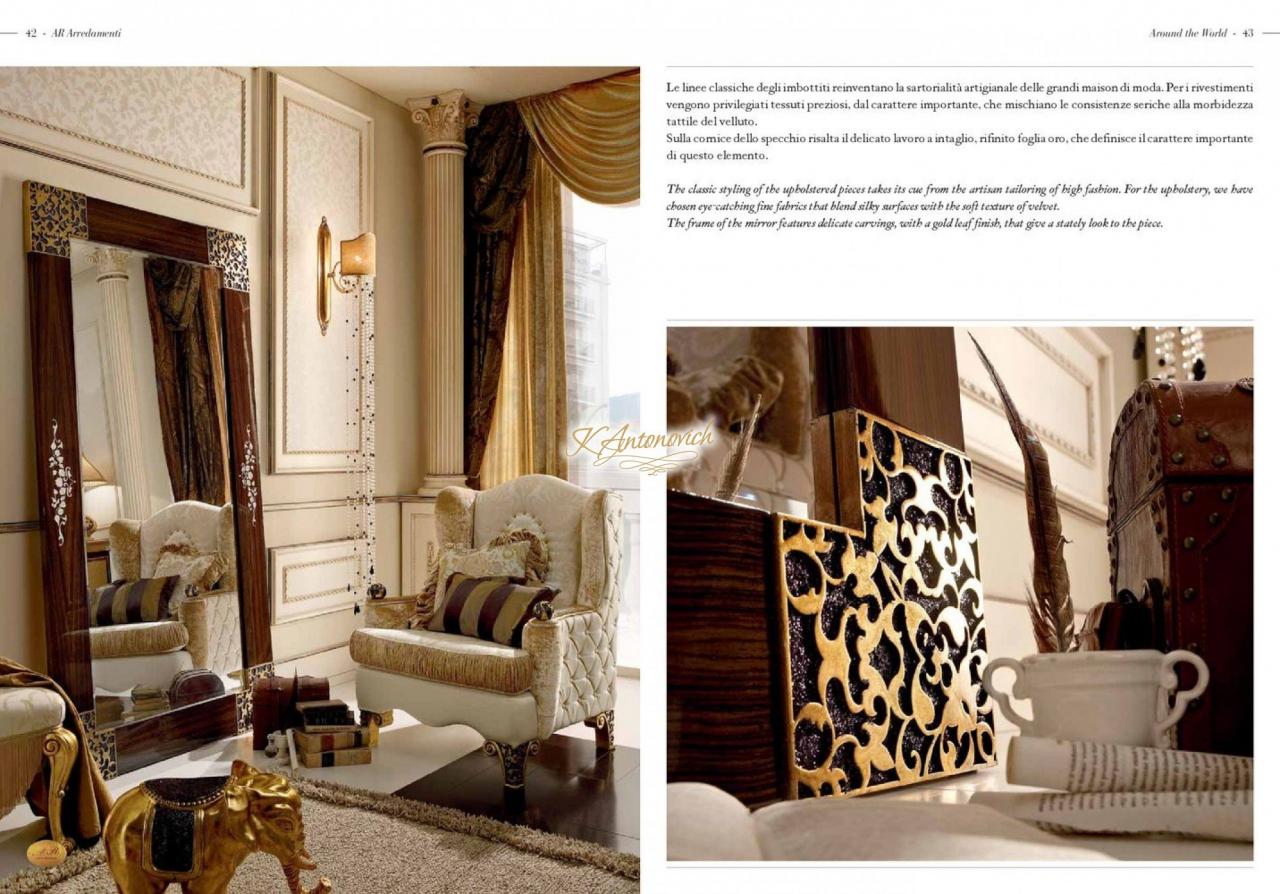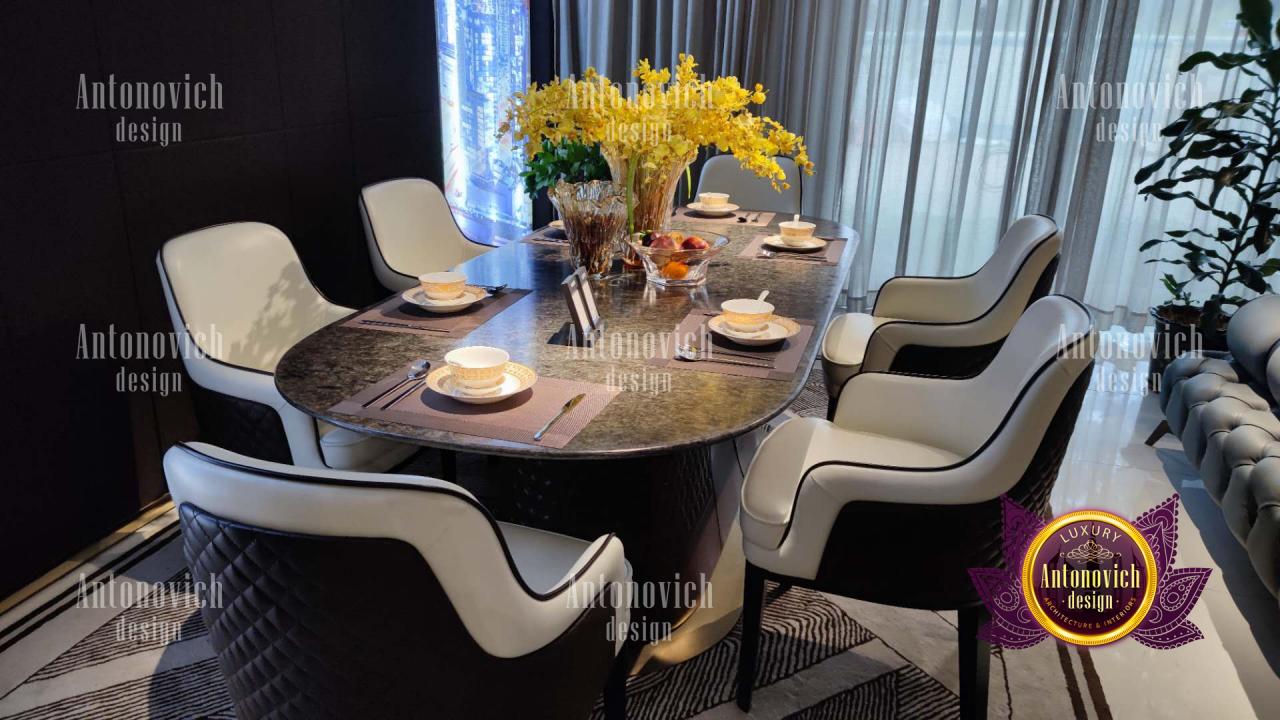Choosing the right furniture for a classic modern home is more than just picking pretty pieces; it’s about curating a space that reflects both timeless elegance and contemporary functionality. This means understanding the core principles of classic modern design – clean lines, natural materials, and a balanced aesthetic – and translating those principles into furniture choices that work together harmoniously.
From selecting the perfect sofa to choosing the right lighting, every element plays a role in creating a truly cohesive and inviting atmosphere.
This guide will walk you through the process, exploring different materials, finishes, and key furniture pieces to consider for your living room, dining area, and bedroom. We’ll delve into the importance of balancing form and function, and show you how to incorporate artwork and accessories to elevate your classic modern aesthetic. Get ready to transform your house into a stylish and comfortable home that reflects your personal style.
Defining Classic Modern Style

Classic modern design, a timeless aesthetic, seamlessly blends the clean lines and functionality of modernism with the enduring elegance and sophistication of classic design principles. It’s a style that avoids fleeting trends, opting instead for enduring quality and understated luxury. This balance creates spaces that are both contemporary and inviting, feeling fresh yet familiar.Classic modern aesthetics prioritize simplicity, functionality, and proportion.
The style emphasizes clean lines, geometric shapes, and a sense of order. It avoids excessive ornamentation or clutter, focusing instead on high-quality materials and impeccable craftsmanship. The overall effect is one of refined minimalism, where each element plays a crucial role in the overall design harmony.
Classic Modern Architectural Features and Their Influence on Furniture
Classic modern architecture often features open floor plans, large windows to maximize natural light, and a connection between indoor and outdoor spaces. These architectural elements directly influence furniture choices. For example, the open floor plan necessitates furniture that defines zones without creating visual barriers. Think of sectionals with clean lines, or strategically placed area rugs to delineate living and dining areas.
Large windows call for furniture that complements the natural light, perhaps in light-colored woods or upholstery. The connection to outdoor spaces might inspire the use of natural materials like rattan or teak in outdoor furniture that flows seamlessly into the interior design. The presence of high ceilings might suggest taller, more dramatic furniture pieces, creating a sense of grandeur without sacrificing the minimalist aesthetic.
Choosing the right furniture is key to achieving that perfect classic modern aesthetic. The clean lines and minimalist approach need pieces that complement, not clash. Consider how your furniture choices will integrate with the overall smart home setup, as described in this awesome guide on classic modern home design incorporating smart home technology. Ultimately, the furniture you select should enhance both the style and functionality of your technologically advanced, classic modern home.
Color Palettes in Classic Modern Interiors
The color palettes commonly used in classic modern interiors are generally neutral and sophisticated. Think of calming shades of gray, creamy whites, and warm beiges as foundational colors. These are often accented with deeper, more saturated hues like navy blue, emerald green, or charcoal gray, used sparingly to create visual interest and contrast. Natural wood tones, whether light oak or rich walnut, add warmth and texture, while metallic accents like brushed nickel or brass introduce a touch of glamour.
The overall effect is a palette that is both calming and elegant, enhancing the feeling of spaciousness and sophistication.
Furniture Selection: Choosing The Right Furniture For A Classic Modern Home

Choosing the right furniture is paramount to achieving a truly classic modern aesthetic. The materials and finishes you select will significantly impact the overall feel and longevity of your space. Careful consideration of these elements ensures your home reflects both timeless elegance and contemporary sophistication.
Classic modern design thrives on a balance between clean lines and high-quality materials. This section explores the various material options and finishes available, helping you navigate the selection process and create a cohesive and stylish living space.
Choosing the right furniture is key to achieving a balanced classic modern home. The goal is to create a space that feels both timeless and contemporary, and understanding the principles of a classic modern home design with a minimalist aesthetic is crucial. This means selecting pieces that are clean-lined, functional, and made from high-quality materials, avoiding clutter to maintain that sophisticated, unfussy vibe.
Ultimately, your furniture choices will define the overall success of your classic modern aesthetic.
Material Selection for Classic Modern Furniture
The choice of materials significantly influences the overall look and feel of your classic modern furniture. Wood, metal, and upholstery each offer unique characteristics, impacting both aesthetics and practicality.
Different wood types, such as walnut, oak, and teak, bring diverse textures and tones to the space. Metals like stainless steel and brushed brass offer sleek, contemporary accents. Upholstery fabrics, ranging from linen to leather, add warmth and texture, impacting comfort and visual appeal. The careful combination of these materials is key to a successful classic modern design.
| Material | Durability | Maintenance | Aesthetic Appeal |
|---|---|---|---|
| Solid Wood (e.g., Walnut, Oak) | High; durable and long-lasting | Moderate; requires occasional polishing and cleaning | Classic, warm, natural; can range from rustic to sophisticated depending on finish |
| Metal (e.g., Stainless Steel, Brass) | High; resistant to scratches and damage | Low; typically requires only occasional wiping | Sleek, modern, industrial; can create a sense of sophistication or minimalism |
| Upholstery (e.g., Leather, Linen) | Varies; leather is durable, linen requires more care | Varies; leather needs conditioning, linen may require spot cleaning or professional cleaning | Adds warmth and texture; can create a cozy or formal atmosphere depending on the fabric |
Finishes for Classic Modern Furniture
The finish applied to your furniture significantly contributes to the overall aesthetic. Polished surfaces offer a high-gloss sheen, while matte finishes provide a more understated elegance. Stained wood can add depth and richness, enhancing the natural grain.
A polished walnut dining table, for example, exudes sophistication, while a matte black metal shelving unit contributes to a minimalist aesthetic. The interplay of these finishes creates visual interest and harmony within the space. Consider the level of sheen and the color tone when selecting finishes to complement your overall design scheme.
Material and Finish Combinations in Classic Modern Design
Imagine a living room featuring a sleek, brushed stainless steel coffee table with a tempered glass top, paired with a plush, linen sofa in a neutral tone. This combination showcases the clean lines of metal, the transparency of glass, and the soft texture of linen, creating a balanced and inviting space that epitomizes classic modern style. Alternatively, a dining room might feature a dark stained oak dining table with simple, straight legs, complemented by leather dining chairs, showcasing a more traditional yet modern feel.
The possibilities are endless, allowing for a personalized expression of classic modern design.
Furniture Selection: Choosing The Right Furniture For A Classic Modern Home

Choosing the right furniture is paramount to achieving that coveted classic modern aesthetic. It’s about striking a balance between timeless elegance and contemporary functionality. The pieces you select will not only define the space but also dictate the overall feel and flow of your living room. Careful consideration of each element is crucial for creating a cohesive and inviting atmosphere.
Essential Living Room Furniture
A classic modern living room doesn’t require an abundance of furniture; instead, it thrives on carefully chosen key pieces. Overcrowding detracts from the clean lines and spacious feel characteristic of the style. Focusing on quality over quantity is key. The essential pieces typically include a sofa, coffee table, side tables, and adequate lighting. These elements work together to create a functional and visually appealing space.
Classic Modern Sofa Design Considerations
The sofa is undeniably the focal point of any living room. For a classic modern space, opt for a sofa with clean lines, simple silhouettes, and neutral upholstery. Think mid-century modern inspired designs with tapered legs and a low profile. Consider materials like high-quality leather or a durable, subtly textured fabric in shades of grey, beige, or navy.
Avoid overly ornate details or fussy embellishments. A modular sofa offers versatility and allows for customization to fit the space perfectly. For example, a three-seater sofa with a chaise lounge extension offers both seating and a relaxed lounging area.
Suitable Coffee and Side Tables
Coffee and side tables complement the sofa and provide practical surfaces. For a classic modern aesthetic, select pieces with simple geometric shapes and sleek lines. Materials like wood (especially walnut or oak), glass, or metal work well. A round or rectangular coffee table in a mid-height range ensures easy access from the sofa. Side tables should be proportionate to the sofa and ideally offer a surface for drinks, lamps, or books.
A glass-topped coffee table with a metal or wood base offers a visually light and airy feel, while a simple wooden side table with clean lines complements a leather sofa beautifully.
Lighting Choices
Lighting plays a crucial role in setting the mood and enhancing the overall aesthetic. Classic modern design favors a layered approach to lighting, incorporating ambient, task, and accent lighting. Ambient lighting, such as recessed lighting or a statement chandelier with simple lines, provides overall illumination. Task lighting, like a floor lamp next to the sofa or table lamps on the side tables, provides focused light for reading or other activities.
Accent lighting, perhaps a strategically placed spotlight highlighting artwork or architectural details, adds depth and visual interest. Consider using dimmers to control the intensity and create different atmospheres throughout the day.
Furniture Selection: Choosing The Right Furniture For A Classic Modern Home

Choosing the right furniture is crucial in achieving that perfect classic modern aesthetic. This style blends clean lines and minimalist forms with timeless elegance, creating a sophisticated and inviting atmosphere. The key lies in selecting pieces that are both functional and visually appealing, reflecting a sense of understated luxury. Let’s explore the essential furniture for your dining and bedroom spaces.
Dining Room Furniture Essentials, Choosing the right furniture for a classic modern home
A well-appointed dining room is the heart of many homes, and classic modern design emphasizes both functionality and style. The selection of your dining set should reflect this balance, creating a space that is both comfortable and visually stunning. Consider these key pieces:
- Dining Table: The centerpiece of any dining room. A classic modern dining table typically features clean lines, a simple shape (rectangular or round are popular choices), and a durable material such as wood (walnut, oak, or maple are excellent options) or high-quality glass. Avoid overly ornate details; simplicity is key.
- Dining Chairs: Choose chairs that complement the table’s style and material. Upholstered chairs in neutral colors like beige, gray, or navy offer comfort and elegance. Consider materials like leather or linen for a luxurious feel. Maintain a cohesive look by choosing chairs with simple lines and minimal detailing.
- Sideboard or Buffet: Provides extra storage for tableware and linens. A classic modern sideboard might feature clean lines, sleek hardware, and a neutral finish to match the overall aesthetic. It serves both a practical and decorative purpose.
- Lighting: Proper lighting is crucial for setting the mood. A statement pendant light above the table or a stylish chandelier can add a touch of elegance to the space. Consider the size and style of the fixture in relation to the dining table and room size.
Classic Modern Dining Table and Chair Considerations
The choice of dining table and chairs significantly impacts the overall look and feel of your classic modern dining room. A rectangular table offers a formal yet versatile option, perfect for both intimate dinners and larger gatherings. Round tables create a more casual and intimate atmosphere. The material of the table and chairs should be considered carefully; wood offers warmth and durability, while glass provides a sleek and modern touch.
Chair upholstery should be chosen for both comfort and durability, with neutral colors being a safe and stylish choice. The overall design should emphasize clean lines, simple shapes, and high-quality materials.
Classic Modern Bedroom Setting
The bedroom should be a sanctuary of calm and sophistication. A classic modern bedroom emphasizes comfort and understated elegance. The furniture selection should reflect this, creating a space that is both restful and stylish.
- Bed Frame: A platform bed with a low profile and clean lines is a classic modern staple. Choose a bed frame made from natural wood, such as oak or walnut, or opt for a sleek metal frame for a more contemporary feel. Avoid overly ornate headboards; a simple, streamlined design is preferred.
- Nightstands: Two matching nightstands flank the bed, providing convenient storage for books, lamps, and other essentials. Choose nightstands with simple designs and clean lines, mirroring the style of the bed frame. Materials like wood or metal work well.
- Dresser: A dresser provides ample storage for clothing and accessories. Opt for a dresser with clean lines, simple hardware, and a neutral finish. Consider a dresser with drawers instead of doors for a more modern look. The dresser should complement the bed frame and nightstands in both style and material.
Selecting Bedroom Furniture to Complement Classic Modern Style
Maintaining a cohesive aesthetic is crucial in a classic modern bedroom. The key is to choose furniture with clean lines, simple shapes, and high-quality materials. Stick to a neutral color palette, using subtle variations in tone to create visual interest. Natural materials like wood and linen add warmth and texture, while metal accents can provide a touch of modern sophistication.
Avoid overly ornate details or busy patterns; simplicity and elegance are paramount. Consider the overall proportions of the furniture in relation to the room size, ensuring that the pieces are appropriately scaled.
Balancing Form and Function

In the pursuit of a classic modern home, the delicate dance between aesthetics and practicality is paramount. Choosing furniture isn’t just about visual appeal; it’s about creating a space that’s both beautiful and functional, a haven that seamlessly blends style and comfort. Ignoring either aspect risks creating a home that’s either visually stunning but impractical or comfortable but aesthetically underwhelming.
The key lies in a harmonious balance, where form and function work in perfect synergy.Furniture placement significantly influences the flow and functionality of a classic modern home. A poorly planned layout can lead to cramped spaces, awkward traffic patterns, and a generally uncomfortable living experience. Conversely, strategic furniture placement maximizes space, enhances the flow of movement, and creates a sense of openness and harmony, truly embodying the essence of classic modern design.
Careful consideration of furniture size, scale, and placement is crucial to achieve this balance.
Multifunctional Furniture for Classic Modern Homes
Multifunctional furniture is a game-changer for maximizing space and functionality in a classic modern home. These pieces cleverly combine several functions into one, offering both aesthetic appeal and practical solutions for smaller spaces or those seeking streamlined design. Examples include a sofa bed, which serves as both seating and a sleeping space for guests, or a coffee table with built-in storage, cleverly concealing clutter while maintaining a clean aesthetic.
A storage ottoman provides additional seating and concealed storage, ideal for blankets, books, or games. These pieces not only save space but also enhance the sleek and uncluttered look synonymous with classic modern design.
Optimal Living Room Furniture Placement
Consider this example of a classic modern living room layout designed for optimal flow and functionality:
| Area | Furniture | Placement Notes |
|---|---|---|
| Focal Point | Modular Sofa | Positioned centrally against the largest wall, facing the fireplace or a large window for optimal viewing. Allows for flexible seating arrangements. |
| Conversation Area | Two Armchairs, Coffee Table | Arranged facing the sofa, creating a comfortable and intimate conversation area. The coffee table should be within easy reach of the sofa and armchairs. |
| Media Area | Media Console | Placed strategically near the seating area, yet discreetly tucked away to avoid overwhelming the space. The media console could be low profile and minimalist in design. |
| Reading Nook | Floor Lamp, Armchair | A quiet corner with comfortable seating and a floor lamp for reading. This can be placed near a window for natural light. |
This layout prioritizes both aesthetics and functionality, creating a welcoming and visually appealing space that’s also practical and comfortable for everyday living. The modular sofa offers flexible seating options, while the strategic placement of other furniture pieces ensures easy movement and access. The overall design emphasizes clean lines and ample space, reflecting the core principles of classic modern style.
Incorporating Artwork and Accessories

A classic modern home isn’t complete without carefully chosen artwork and accessories. These elements add personality, depth, and visual interest, elevating the space beyond its functional purpose. The right pieces can subtly enhance the clean lines and minimalist aesthetic of the furniture, creating a harmonious and sophisticated atmosphere. Selecting the right artwork and accessories is crucial in achieving that perfect balance between modern simplicity and classic elegance.The key to successful incorporation lies in understanding the interplay between form and function, ensuring each piece contributes to the overall aesthetic and doesn’t overwhelm the space.
Artwork should be considered as another element in the design, complementing the existing furniture and color palette, rather than competing with it. Accessories, on the other hand, serve to add subtle texture and personality, enriching the experience of the room.
Artwork Selection for a Classic Modern Aesthetic
Choosing artwork for a classic modern space involves selecting pieces that reflect the style’s inherent simplicity and elegance. Abstract art, with its clean lines and bold colors, often works exceptionally well. Think of a large-scale abstract painting in muted earth tones, perhaps with hints of gold or silver, hanging above a sleek, mid-century modern sofa. Alternatively, a series of smaller, framed prints with geometric patterns could create a visually striking gallery wall.
Photography, especially black and white architectural or landscape shots, can also contribute a sophisticated touch. The important thing is to maintain a sense of balance and avoid overly busy or ornate pieces.
Accessory Choices to Complement Classic Modern Furniture
Accessories in a classic modern home should be carefully curated, avoiding clutter. Think of sleek, sculptural ceramic vases, perhaps in matte black or white, holding a few simple branches or a single, striking flower. A mid-century modern coffee table might be perfectly complemented by a stack of beautifully bound books, showcasing interesting textures and colors. A simple, geometrically patterned throw blanket draped over a sofa adds warmth and visual interest without overwhelming the minimalist aesthetic.
Metal accents, such as polished chrome or brushed nickel, can be strategically incorporated through lamps, trays, or decorative bowls, adding a touch of modern sophistication. Remember, less is often more in this style.
Scale and Proportion in Artwork and Accessory Selection
The size and placement of artwork and accessories are paramount. Oversized artwork can create a dramatic focal point, but too much large-scale art can overwhelm a room. Conversely, too many small accessories can create a cluttered feel. A good rule of thumb is to consider the scale of the furniture. A large piece of art should ideally be proportionally sized to the wall space and the furniture below it.
Similarly, accessories should be chosen in sizes that complement the furniture and the overall scale of the room. Avoid placing tiny accessories on large surfaces, or vice versa. The goal is to create a visually balanced and harmonious space.
A Visual Description of a Classic Modern Room
Imagine a sun-drenched living room with walls painted in a warm, neutral beige. A low-slung, mid-century modern sofa in charcoal grey sits centered against one wall, flanked by two sleek, chrome-legged armchairs. Above the sofa hangs a large abstract painting in muted greens and browns, its clean lines echoing the furniture’s design. A low, rectangular coffee table made of dark wood and polished brass sits in front of the sofa, holding a stack of art books and a simple, ceramic vase with a single, elegant orchid.
A large, geometric patterned rug in muted greys and creams anchors the seating area. A minimalist floor lamp with a chrome base and a linen shade stands discreetly in the corner, casting a soft, warm light. The overall effect is one of understated elegance, a harmonious blend of clean lines, natural textures, and carefully chosen artwork and accessories.